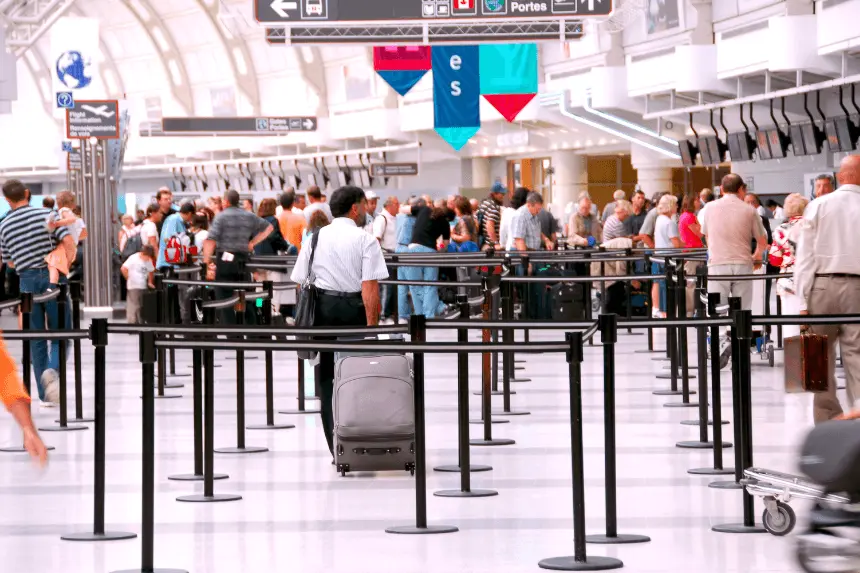In a significant shift, U.S. airports have officially ended the requirement for passengers to remove their shoes during TSA security screenings. This policy, which has existed for more than 20 years ago came about following the 2001 case of the shoe bomber. Kristi Noem, the Secretary of Homeland Security, made it clear that even though the shoe removal regulation has been lifted, the multiple-level security process has not been changed, and the passengers still have to remove their belts, coats, and laptops, and liquids must be kept separately. This transformation is in line with efforts to enhance the airport experience, where there is a compromise between safety and the convenience of the travelers. The new policy has been put in place in several large airports, and this is a sign that security checks are going to be performed more efficiently.
What Made the TSA Remove the Shoe Removal Requirement?
The U.S. government has ended the shoe removal policy at every airport within the country. Transportation Security Administration (TSA) under Homeland Security Secretary Kristi Noem changed this assessment due to a review of changing security technologies and practices. After an incident in 2001 when a shoe bomber used bombs hidden in his shoes to blow up, passengers had, since 199, been forced to take off their footwear when they were being screened.
According to Noem, the decision was inspired by great advances in security technology and a new brand of airport security called the multi-layered approach. This shift will be an end to a policy that pragmatic travelers considered inconvenient, and is required to ensure improved security. Here is the link to our article on the Delta Plane Crash
What are the new security screening guidelines?
Even though TSA will not demand the removal of shoes by passengers, the screening will be done effectively. The opening of belts, coats, and the placement of laptops into separate bins and liquids will still be requested of the travelers. These processes are continuously being reviewed, but there is an effort to strike a balance between passenger safety and convenience by the authorities.
According to Noem, current safety measures must be increased without sacrificing enjoyment in air travel, as both the state and advances in technology have directed their efforts in that direction.
Which airports have first launched the change?
Some of the largest airports in the United States introduced the new policy on removing their shoes before the official announcement. Airports like the Cincinnati/Northern Kentucky International Airport, the Philadelphia International Airport, and the Piedmont Triad International Airport had earlier waived the shoe-off demands of passengers before it was done nationwide.
Even the shoe-free rule was waived for passengers registered in the so-called fast-track program, TSA PreCheck, which involves not only filling out an application and submitting fingerprints, but also shows that the efficiency of security is shifting towards a simpler system. Here is the link to our article on Airport Runway Closure
What Will The Change Mean To Air Travel?
With the final elimination of the shoe removal rule, the air travel experience is likely to become much better. Major carriers represented by the airport trade association, Airlines for America, expressed firm support for the policy shift. President and CEO of the organization, Nicholas. Calio Haile moved, claiming that it is a significant mark towards easier and safer traveling.
The decision to upgrade security measures by TSAA is a result of years of streamlining measures in the airports to achieve convenience and balance with safety. This is aimed at optimizing the efforts and staying highly vigilant when it comes to security, given that there have been incidents that occurred in history, like the September 11attacks, and also the shoe bombing incident of 2001.
Closing Remarks about the New Security Check of the TSA
The shift in the requirement of removing shoes at the airport is considered to be a new era in the security of the U.S. airports. Although TSA security screening still prioritizes passenger safety, this change reflects ongoing advancements in security technology systems and protocols. With new techniques emerging, travelers will enjoy smoother, hassle-free procedures at security points without compromising the quality of security checks. Millions of passengers, who have long endured the inconvenience of this outdated policy, are likely to welcome the shift, marking a positive change in the TSA security screening experience.








